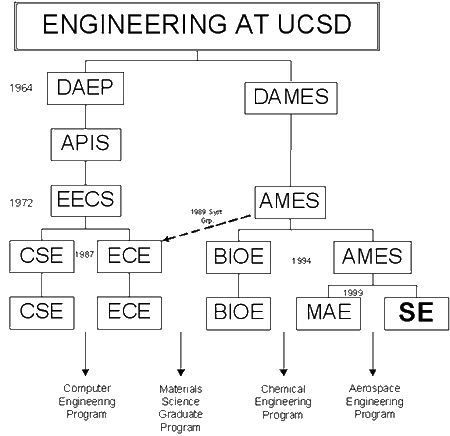
Structural engineering is traditionally viewed as an activity within civil engineering even though many other engineering disciplines such as aerospace, marine (naval, offshore), and mechanical engineering contain well established discipline specific structural systems components. In all of the various engineering disciplines there exists a large commonality in the structural materials used, in the general principles of structural mechanics, in the overall design philosophy and criteria, and in the modeling and analysis tools employed for the numerical quantification and visualization of structural response. Particularly, small disciplinary differences in materials and computational tools are rapidly disappearing with the civil engineering community opening up to new structural materials developed and used to date primarily in the aerospace industry and with computational developments which are less product specific but more geared towards a holistic structural systems design approach with interactive graphics, object oriented data base management and concurrent visualization and data processing. Developments in overall structural systems design are increasingly cross-disciplinary over many traditional engineering areas.
Together with the Department for Applied Electro-Physics, the Department of Aerospace and Mechanical Engineering at UCSD had since its very conception in 1964/65 as the Department of Aerospace and Mechanical Engineering Sciences this cross-disciplinary philosophy and approach to engineering education and research which allowed engineering at UCSD to grow within a very short time period into a top ranked school with nationally and internationally leading and recognized programs. Adapting to the rapid changes in engineering, the two original departments provided more visibility to their programmatic focus by renaming their departments on the one hand from the Department of Aerospace and Mechanical Engineering Sciences to Applied Mechanics and Engineering Sciences (AMES) in 1972, and on the other hand from the Department for Applied Electro-Physics first to Applied Physics and Information Science (APIS) in 1978, and then to Electrical Engineering and Computer Science (EECS) in 1980. It is just natural that with rapid growth and specialization of programs, one or two departments cannot adequately service the needs of all individual engineering groups and disciplines which has led over the years to prudent and logical spin-offs in the form of new departments. The first departmental split occurred in EECS in 1987 with the formation of the Computer Science and Engineering (CSE) and Electrical and Computer Engineering (ECE) departments. Changes in the AMES department started in 1989 when the Systems Science Group moved from AMES to the ECE department. In 1993 the structural engineering group formed a separate cost center for Structural Systems Research directly under the School of Engineering with independent administration from the AMES department except for faculty and teaching matters.

The first departmental spin-off in AMES came in 1994 with the formation of the Bioengineering department which left AMES with mechanical engineering, chemical engineering, and structural engineering groups. In 1995 three separate departmental divisions were formed, namely a Division of Mechanical Engineering, a Division of Structural Engineering, and a Division of Chemical Engineering. The evolution of Engineering at UCSD is depicted in Fig. 1. The motivation for all of the above evolutionary spin-offs and separations were (1) better visibility for the undergraduate and graduate programs in direct competition with other academic institutions, (2) better focus in the individual educational programs to train professionals in recognized engineering fields, and (3) to provide more flexibility in FTE, personnel and fiscal resource allocations in support of specific programmatic thrust areas.
The latest evolution in AMES, namely the formation of a Structural Engineering department, follows essentially the same pattern with the exception that in the case of structural engineering the visionary element of the original cross-disciplinary AMES model is still preserved but with a very clear focus on structural systems behavior.
The vision of a Structural Engineering department at UCSD is not new, but rather carefully laid out and developed over the past 12 years. With the decision of the AMES department in the early 80's to focus on more traditional engineering degree programs, this vision led to a B.S. degree program in structural engineering rather than civil engineering to build on the existing strength in structural mechanics and materials without the need to expand into other traditionally required civil programs such as surveying, traffic engineering, construction, waste water treatment, etc. Full ABET accreditation for the undergraduate structural engineering program was obtained in 1987. M.S. and Ph.D. graduate degree programs in structural engineering were added in 1985, and the program has enjoyed great popularity with all students due to the flexibility of employment offered by the cross-disciplinary structural systems education and the structural engineering degrees.
In parallel to the development of the educational structural engineering program, the research program in structural engineering also has seen significant changes and growth over the past decade. Most of the research activities focus around the Charles Lee Powell Structural Research Laboratories which started in 1986 with the dedication of the Structural Systems Laboratory, the first research facility in the United States for the full-scale testing of up to 5-story (15 m) tall buildings or bridge systems over 35 m in length under simulated earthquake and traffic loads. The huge demand for large or full-scale structural testing, driven to great extent by the 1989 Loma Prieta and 1994 Northridge earthquakes, led in 1993-94 to the construction and dedication of the Structural Components and the Advanced Composite Structures Laboratories. Expansion of the experimental research facilities continued with laboratories for advanced composites characterization and manufacturing, geotechnical engineering and earthquake engineering as part of the SERF (Science and Engineering Research Facility) building, and a dedicated Structural Response Modification Devise (SRMD) test facility for Caltrans in the previous High Bay Physics laboratory. To date the Powell Structural Research Laboratories at UCSD have developed into one of the world's largest experimental structural research facilities with internationally recognized research programs in structural earthquake engineering and advanced composites structural systems.
